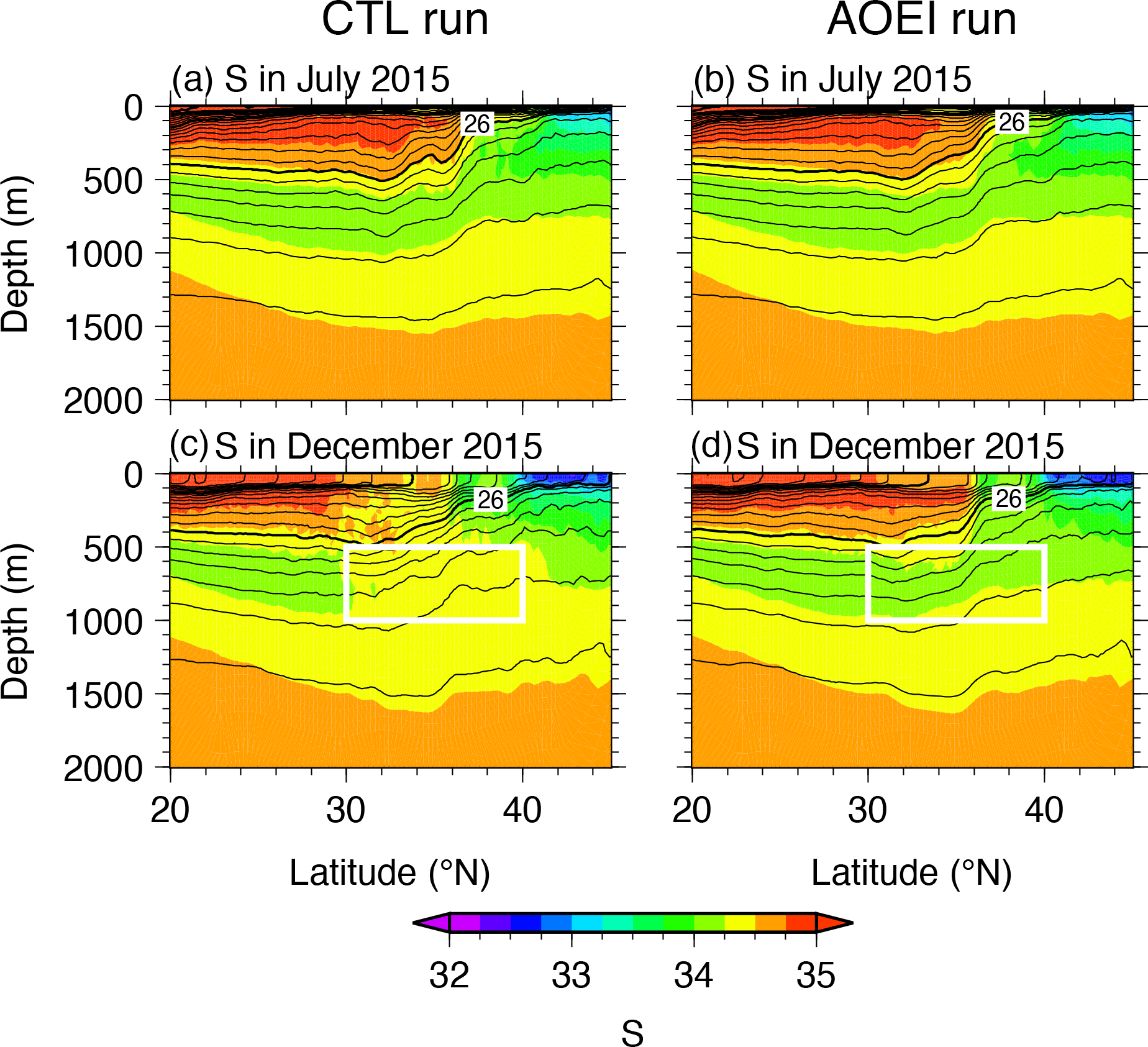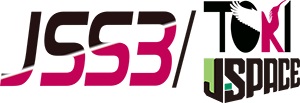Development of an EnKF-based ocean data assimilation system
JAXA Supercomputer System Annual Report February 2021-January 2022
Report Number: R21ER2402
Subject Category: Space Technology
- Responsible Representative: Misako Kachi, Earth Observation Research Center
- Contact Information: Misako Kachi(kachi.misako@jaxa.jp)
- Members: Misako Kachi, Shun Ohishi
Abstract
With the recent enhancement of observation networks such as satellites and Argo floats, temperature, salinity, and sea surface height have been observed at relatively high spatiotemporal resolution. However, for example, the satellites cannot observe rainy regions and the number of Argo float observations is still not sufficient to capture the spatiotemporal variations over the global ocean. Data assimilation reproduces an accurate three-dimensional ocean analysis field without missing values by combining simulation and observations. In this study, we develop an ensemble Kalman filter (EnKF)-based ocean data assimilation system that assimilates satellite and in-situ observations at a daily interval using the JAXA Supercomputer System Generation 3 (JSS3).
Reference URL
Please refer to ‘Ocean – JAXA Earth-graphy / Space Technology Directorate I‘.
Reasons and benefits of using JAXA Supercomputer System
The computation costs of high-resolution ensemble simulation using an ocean model and data assimilation using the EnKF are very high. Therefore, a high-performance computing infrastructure such as the JSS3 enables us to integrate an EnKF-based ocean data assimilation system.
Achievements of the Year
In 2020, the previous fiscal year, we performed sensitivity experiments on how to inflate ensemble spread and how to apply the analysis update to the model evolution using an EnKF-based ocean data assimilation system that assimilates satellite and in-situ observations at a daily interval. The results demonstrated that the combination of relaxation-to-prior perturbations (RTPP; Zhang et al. 2004) and incremental analysis update (IAU; Bloom et al. 1996) significantly improved both dynamical balance and analysis accuracy. However, the sensitivity experiment still shows that the low-salinity structure is broken in the intermediate layer around the Kuroshio Extension region. Here, fronts and eddies are distributed widely with large gradients, and therefore, the associated representation errors would be large. In atmospheric data assimilation systems, assimilating all-sky satellite radiances might degrade analysis accuracy because of large differences between clear-sky and cloudy radiances. To mitigate the effects, Minamide and Zhang (2017) proposed adaptive observation error inflation (AOEI) and demonstrated its advantage. Therefore, this study investigates the impacts of the AOEI on the low-salinity structure by comparing the AOEI and CTL runs with and without the AOEI, respectively.
In the CTL run, temperature and salinity increments weaken the density stratification around the Kuroshio Extension region, and therefore, the diffusivity becomes exceedingly large. As a result, strong salinity diffusion results in the degradation of the low-salinity structure (Fig. 1a, c). By contrast, in the AOEI run, the inflated observation errors reduce temperature and salinity increments around the Kuroshio Extension region. Therefore, the degradation mechanism seen in the CTL run is suppressed (Fig. 1b, d). Furthermore, the dynamical balance and analysis accuracy are significantly improved in the AOEI run compared with the CTL run.
Using the EnKF-based ocean data assimilation system developed in this study, we are now planning to produce ensemble ocean analysis products.

Fig.1: Salinity (color) and Potential density meridional section along 150E in (a) CTL and (b) AOEI run in July 2015. (c), (d) Same as (a) and (b), but for December 2015.
Publications
– Oral Presentations
1. S. Ohishi, T. Hihara, H. Aiki, J. Ishizaka, Y. Miyazawa, M. Kachi, and T. Miyoshi “Development of an ensemble Kalman filter-based regional ocean data assimilation system” The second international Operational Satellite Oceanography Symposium (OSOS-2), Online, May 2021
2. S. Ohishi, T. Hihara, H. Aiki, J. Ishizaka, Y. Miyazawa, M. Kachi, and T. Miyoshi “Improving the salinity structure by AOEI in an EnKF-based ocean data assimilation system” Japan Geoscience Union Meeting 2021, Online, June 2021
3. S. Ohishi, T. Hihara, H. Aiki, J. Ishizaka, Y. Miyazawa, M. Kachi, and T. Miyoshi “Improving the salinity structure by AOEI in an EnKF-based ocean data assimilation system”, Asia Oceania Geosciences Society 18th Annual Meeting (AOGS 2021), Online, August 2021
4. S. Ohishi T. Miyoshi, M. Kachi, Y. Miyazawa, N. Hirose, N. Usui, Y. Fujii, N. Hirose, and Y. Tanaka “Regional ocean data assimilation systems in Japan” UN Ocean Decade Kickoff Conference for the Western Pacific and its Adjacent Areas, Online, November 2021
5. S. Ohishi, T. Miyoshi, M. Kachi “Improving the salinity structure by an adaptive observation error inflation in an EnKF-based ocean data assimilation system” Ocean Sciences Meeting 2022, Online, February 2022
– Poster Presentations
1. S. Ohishi, T. Hihara, H. Aiki, J. Ishizaka, Y. Miyazawa, M. Kachi, and T. Miyoshi “Fusion of high-frequency satellite observations and ocean simulation” OIST-RIKEN Joint Symposium Series 1, Okinawa, April 2021
2. S. Ohishi, T. Miyoshi, and M. Kachi “LETKF-based ocean research analysis in the Western North Pacific and Maritime Continent regions”, The Joint PI Meeting of JAXA Earth Observation Missions FY 2021, Online, January 2022
3. S. Ohishi, T. Miyoshi, and M. Kachi “Improving the salinity structure by AOEI in an EnKF-based ocean data assimilation system” The 4th R-CCS International Symposium, Online, February 2022
Usage of JSS
Computational Information
- Process Parallelization Methods: MPI
- Thread Parallelization Methods: Automatic Parallelization
- Number of Processes: 4 – 400
- Elapsed Time per Case: 200 Minute(s)
JSS3 Resources Used
Fraction of Usage in Total Resources*1(%): 0.44
Details
Please refer to System Configuration of JSS3 for the system configuration and major specifications of JSS3.
| System Name | CPU Resources Used(Core x Hours) | Fraction of Usage*2(%) |
|---|---|---|
| TOKI-SORA | 10416838.79 | 0.51 |
| TOKI-ST | 0.00 | 0.00 |
| TOKI-GP | 0.00 | 0.00 |
| TOKI-XM | 0.00 | 0.00 |
| TOKI-LM | 0.00 | 0.00 |
| TOKI-TST | 0.00 | 0.00 |
| TOKI-TGP | 0.00 | 0.00 |
| TOKI-TLM | 0.00 | 0.00 |
| File System Name | Storage Assigned(GiB) | Fraction of Usage*2(%) |
|---|---|---|
| /home | 13.33 | 0.01 |
| /data and /data2 | 153733.33 | 1.64 |
| /ssd | 133.33 | 0.03 |
| Archiver Name | Storage Used(TiB) | Fraction of Usage*2(%) |
|---|---|---|
| J-SPACE | 0.00 | 0.00 |
*1: Fraction of Usage in Total Resources: Weighted average of three resource types (Computing, File System, and Archiver).
*2: Fraction of Usage:Percentage of usage relative to each resource used in one year.
ISV Software Licenses Used
| ISV Software Licenses Used(Hours) | Fraction of Usage*2(%) | |
|---|---|---|
| ISV Software Licenses(Total) | 0.00 | 0.00 |
*2: Fraction of Usage:Percentage of usage relative to each resource used in one year.
JAXA Supercomputer System Annual Report February 2021-January 2022


